Reviewing the three waves of market movements: Can Ethereum's 'curse' be broken?
The first wave was triggered when the spot ETF was approved in March 2024, directly pushing Bitcoin to break the historic high of 70,000 USD, with Ethereum rising to 4100 USD in sync. The second wave occurred at the end of 2024 after Trump won the election, with Bitcoin strongly breaking through 100,000 USD, nearing 110,000 USD, but Ethereum remained around 4100 USD, failing to set a new record. The third wave is the current one, driven by both the spot ETF and favorable Trump news, with Bitcoin reaching a new high of 123,000 USD, while Ethereum is still hovering around 4100 USD, seemingly stuck in the same bottleneck.
Can Ethereum break through the 4100 USD barrier and move towards 5000 USD?
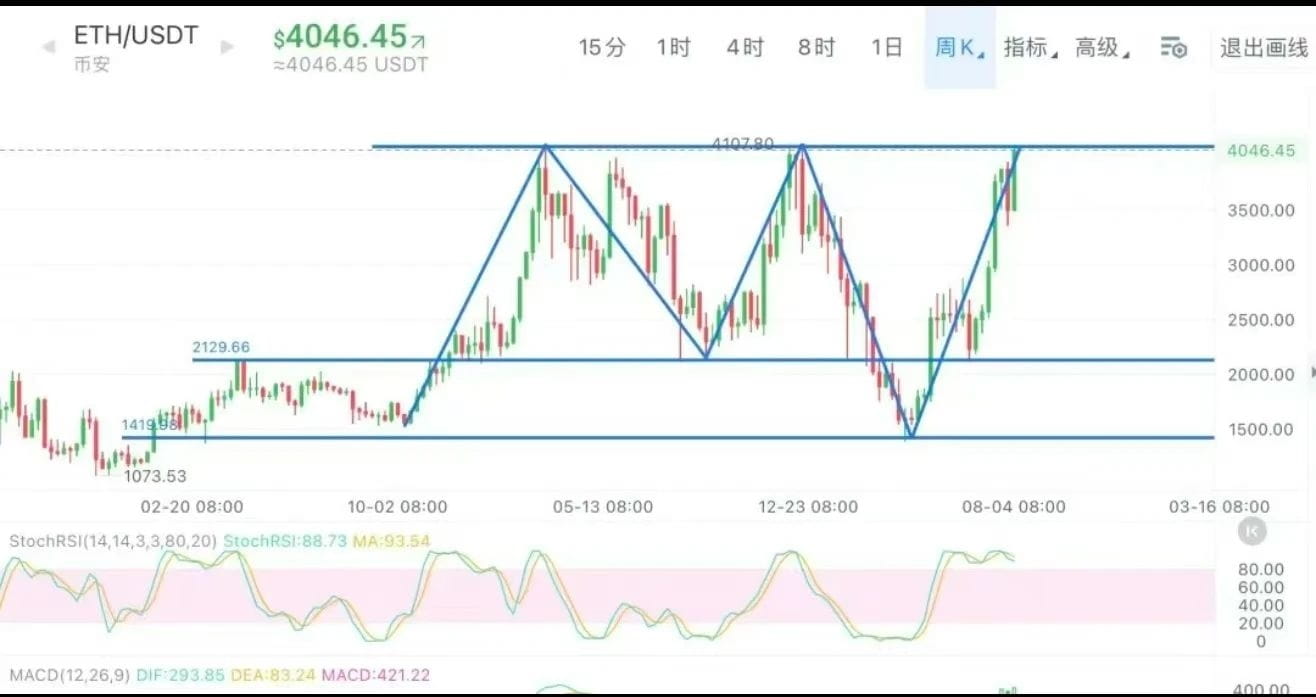
Currently, ETH has formed a non-standard W bottom in terms of its shape, with the price pressing against the key weekly resistance level of 4100 USD. In the past three major market movements, BTC has continuously set new highs while ETH has remained stuck at this level. To break this 'curse,' crossing 4100 USD is a necessary threshold.
From the news perspective, the focus remains on spot ETFs and Trump's policies. The inflow amount for Ethereum's spot ETF is already close to Bitcoin's level, and its trading volume is rapidly catching up—previously, the best performance was only about 30% of BTC ETF's trading volume. Buying remains primarily from ETFs and U.S. institutional investors, with little change in internal buying, so future attention should be on the sustained positioning rhythm of institutions and ETFs.
Whether the target of 5000 USD can be achieved depends on two points:
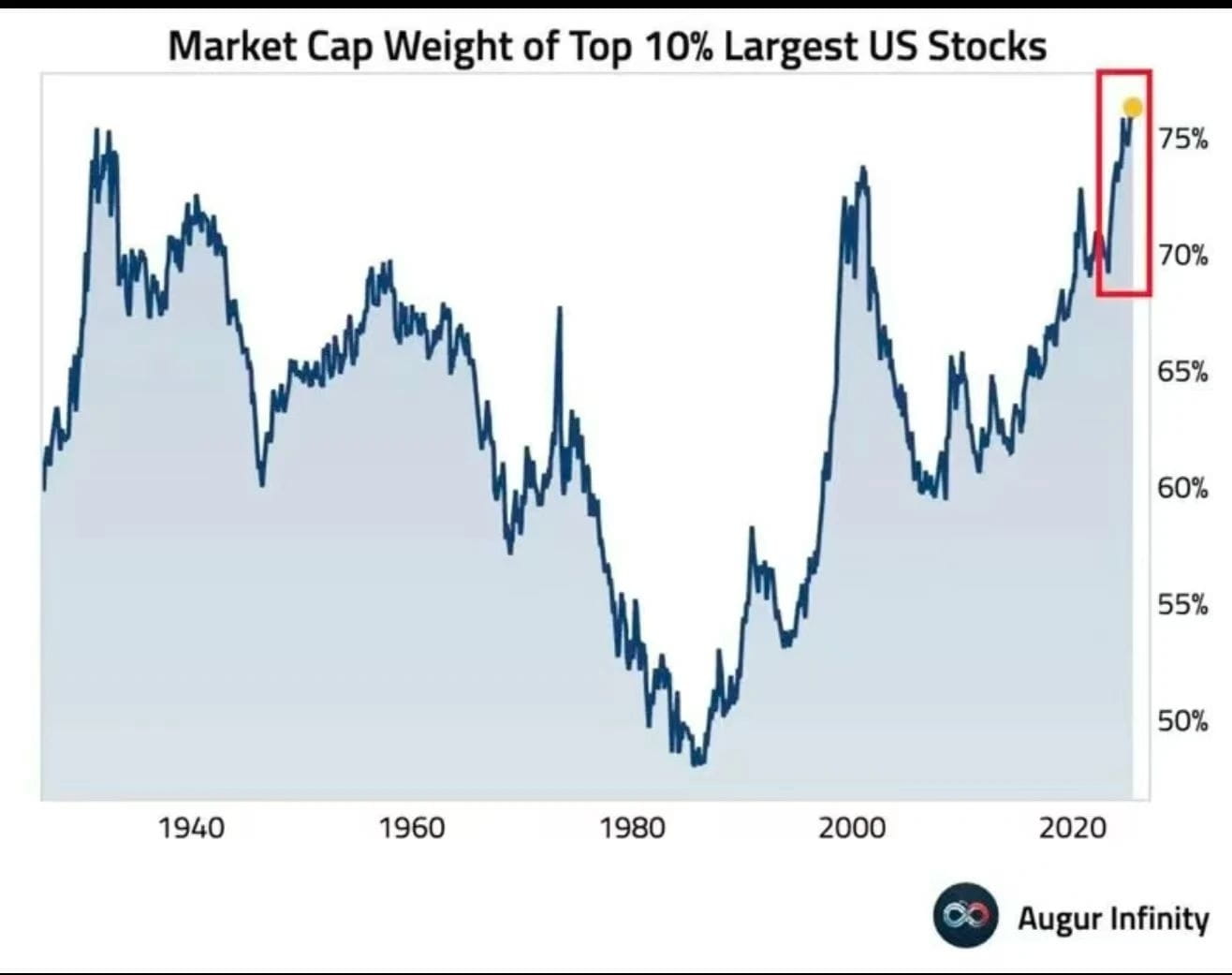
The risk in the U.S. stock market is the biggest uncertainty for crypto.
Currently, the rise in U.S. stocks is almost entirely supported by Trump's policies, but the structure is extremely unbalanced—stocks in the top 10% of market capitalization account for 76% of total market capitalization, reaching a historic high. The 'Seven Sisters' of U.S. stocks—Nvidia, Apple, Google, Meta, Microsoft, Tesla, Amazon—have contributed almost all the gains. If any of these companies underperform expectations or face negative news, it could trigger a chain sell-off.
UBS stated in its latest report that the U.S. stock market is currently in a high-risk phase: the speed of rise is too fast, and gains are highly concentrated, almost putting all eggs in one basket. The main risk in the current crypto market actually comes from the U.S. stock market rather than crypto itself.
Bitcoin: Is it going to set new highs again, or is it consolidating for a pullback?
After the halving, Bitcoin has completed three distinct waves of upward movement, basically forming a five-wave structure, and keeps refreshing historical highs. In the short term, as long as the price does not fall below 116200 USD, the trend remains strong; even if a pullback occurs, as long as the daily line holds above 114800 USD, it cannot be easily judged as turning bearish.
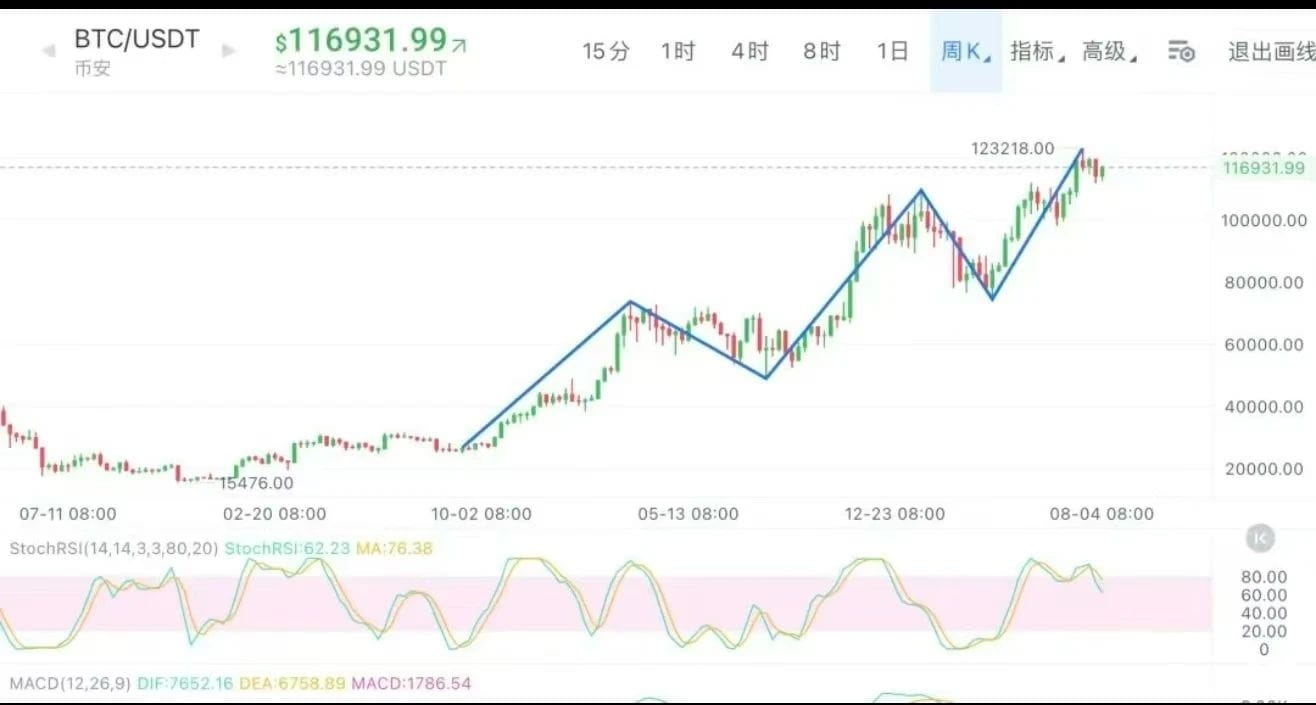
Currently, BTC's price seems to be constructing a downward channel, but we must guard against it first 'sweeping away' stop-loss orders above 120,000 USD before pulling back and washing out.
The strength of this wave is not due to a surge in buying but rather a significant reduction in selling pressure. This batch of new ETF and institutional investors will not dump everything like traditional crypto players at high levels; instead, they take partial profits, reducing market selling pressure. Therefore, in the absence of new policy stimuli and fund inflows, the probability of BTC setting new highs again in the short term is limited, unless interest rate cuts release liquidity, or the U.S. stock market continues to be strong.
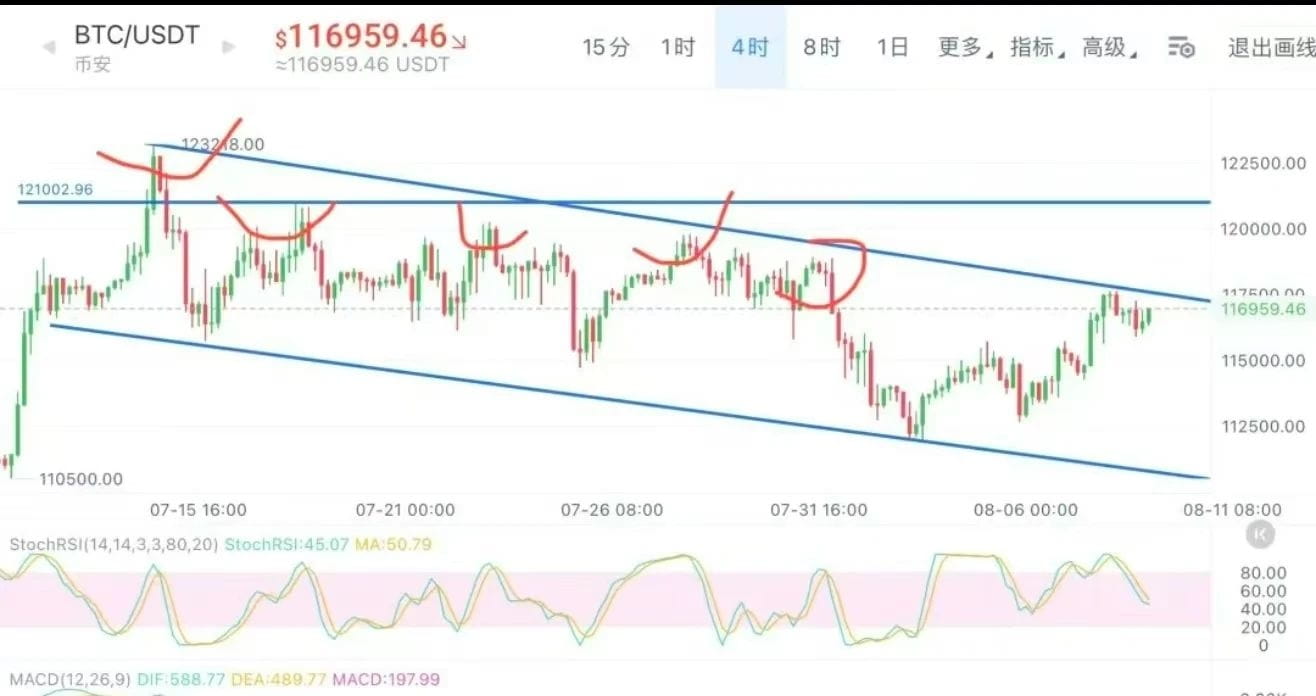
Additionally, historical data shows that Bitcoin's probability of falling in August is higher than that of rising. In the first week of August this year, BTC rose by 0.5%, and whether it can break the 'August downturn curse' is worth paying attention to.
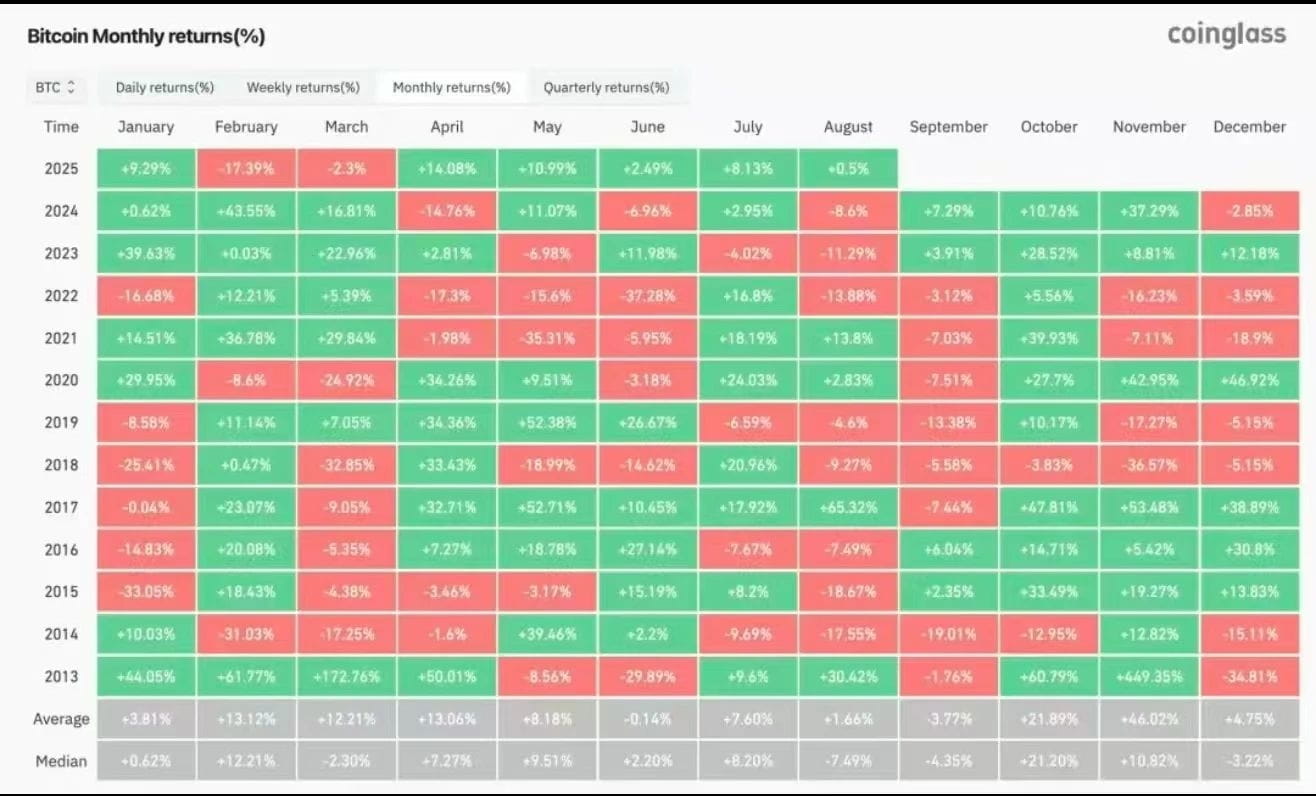
Short-term strategy and trend judgment
In the short term, ETH has returned to 4000 USD and is again approaching the historical resistance level of 4100 USD. The previous two rounds of market movements both retraced here, but this time the rhythm is still lagging behind BTC. Therefore, with the price already in the target range, we can take some profits from spot and long positions and place a small amount of short positions as hedges against spot; this way, we can prevent being left out by an empty position while also reducing risk during a pullback.
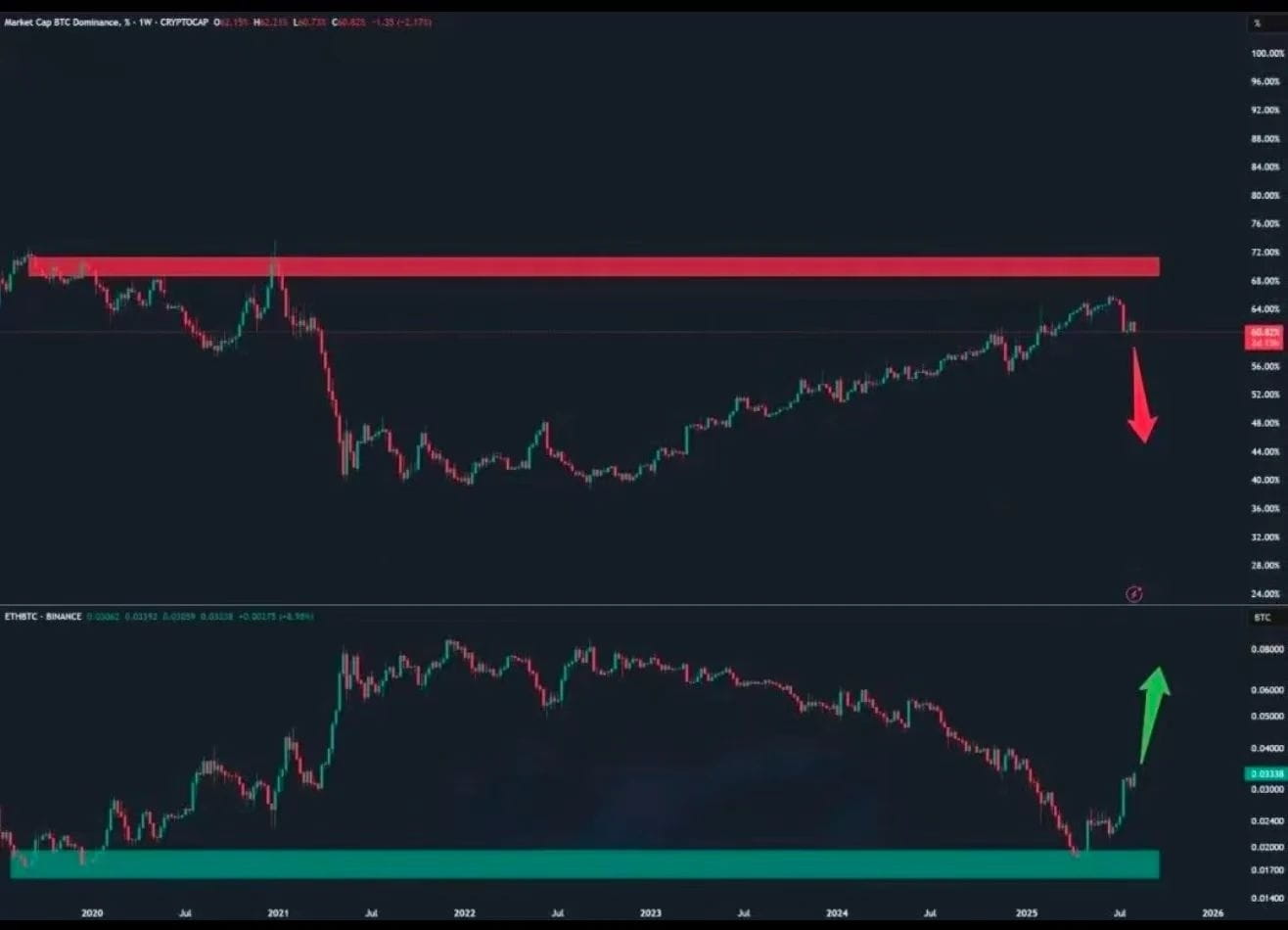
From the BTC and ETH exchange rate perspective, the market is still in the rebound zone, Bitcoin's market share is declining, and the short-term bull-bear game will continue.
The traditional 'altcoin season' has become history.
The current market is similar to the U.S. stock market, with few opportunities for small and mid-cap projects, and funds are highly concentrated on top assets. The driving force behind this round of market movements mainly comes from ETFs and institutional funds, which do not flow to altcoins after profiting; thus, the previous era of broad flowering and long-term rotation for altcoins is gone.
The current situation is: after three rounds of significant market movements, BTC keeps setting new historical highs, while most altcoins' highs are getting lower with each wave. The market is severely differentiated, with only a few altcoins truly capable of breaking historical highs; moreover, the market cycles are short, volatility is fast, and the liquidity spillover effect has almost disappeared.
Today's altcoin sector and on-chain hotspots
L2 sector is active: Arbitrum's on-chain trading volume increased by 18%, OP chain's net inflow is 52 million USD, and short-term heat is recovering.
RWA narrative continues: Ondo Finance (ONDO) has recorded positive inflows for three consecutive days, with active institutional buying.
Meme sector is showing unusual activity: PEPE has risen over 12% in 24 hours, the number of active wallets on-chain has increased by 9%, and DOGE's funding rate has returned to positive values.
The AI sector is warming up: AI tokens like FET and AGIX are being driven by the strength of Nasdaq AI concept stocks, with clear short-term fund involvement.
Quality coins worth paying attention to
ETH – Focus on the 4100 USD breakthrough; if it stabilizes, it is expected to accelerate to the 4500-5000 range.
PEPE – The top choice for meme heat recovery, with a short-term strength threshold at 0.0000078 USD.
ONDO – RWA narrative continues, positive sentiments persist, and the position structure is healthy.
ARB / OP – Clear signs of fund inflow in L2, short-term rebound potential.
In the past three waves of market movements, Bitcoin continuously set new records, while Ethereum has remained stuck at 4100 USD, becoming a major puzzle in the market. This time, 4100 USD is not only a technical key point but also a watershed for sentiment and funds—breaking through could open the door to 5000 USD; if it gets pushed down again, the market may continue to revolve around Bitcoin.
However, regardless of the outcome, the main line is already very clear: ETFs and institutional funds are rewriting the operational logic of the crypto market, and the 'golden season' for altcoins is getting shorter; opportunities will only concentrate on a few targets and short-term rotations. Moving forward, what we need to do is not to blindly chase highs, but to accurately ambush between mainstream and hot sectors—getting the right direction is enough.